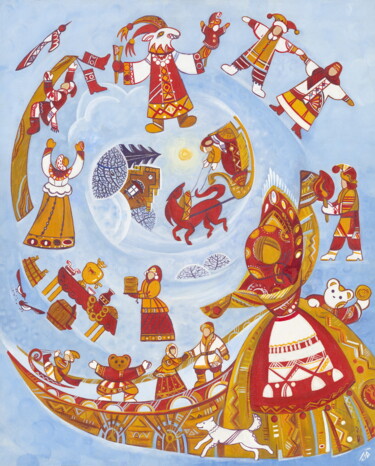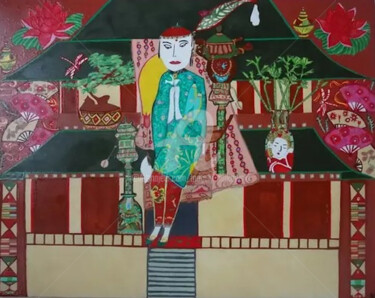13,295 出售原画:
如何定义天真的艺术风格 ?
What is a Naive painting?
Naive painting is a style of art that was started by artists like Henri Rousseau who didn't know much about art. Most of the time, naive art is defined as visual art made by someone who hasn't had the training and education that a professional artist does. When a professional artist tries to copy this style, it is often called "primitivism."
What are the characteristics of Naive painting?
Naive art is usually defined as visual art made by someone who doesn't have the formal training and education that a professional artist does (in anatomy, art history, technique, perspective, ways of seeing). When a trained artist tries to copy this style, it is sometimes called primitivism, pseudo-naive art, or faux naive art.
Unlike folk art, naive art doesn't have to come from a specific popular cultural context or tradition. In fact, at least in advanced economies and since the Printing Revolution, it's impossible not to know about the local fine art tradition, which has spread through popular prints and other media. Naive artists know about "fine art" conventions like graphical perspective and compositional conventions, but they can't or don't use them to their full potential. Outsider art (also called "art brut"), on the other hand, refers to works that come from a similar background but have little to do with the mainstream art world.
Naive art is known for being simple and honest like a child, and this is why it is often copied. These kinds of paintings usually have a flat style of drawing and a simple way of showing depth. Henri Rousseau, a French Post-Impressionist who lived from 1844 to 1910 and was discovered by Pablo Picasso, was one of the most important painters of "naive art."
There has been some disagreement about what the term means and where it "ends" with other terms like folk art and outsider art. Naive art is usually used to describe works of fine art made by self-taught artists, like paintings and sculptures. Folk art, on the other hand, refers to things that can be used in everyday life. But this difference has been argued about. [6] "Provincial" is another word that can be used, especially for paintings and buildings. It is mostly used to describe work by artists who have had some traditional training but whose work falls short of metropolitan or court standards by accident.
By what do naive paintings stand out?
People often think of naive art as art made by someone who hasn't had any formal training or a degree, or hasn't had much. Before the 20th century, this was true, but now there are schools for naive art. Naive art is now a fully recognized type of art that can be seen in galleries all over the world.
The features of naive art don't fit well with the formal aspects of painting, especially when the three rules of perspective aren't followed (as described by the Progressive Painters of the Renaissance):
-Objects get smaller as you get farther away,
-Colors become less clear as you get farther away;
-Details become less clear as you get farther away.
Here are the results:
-Geometrically wrong effects of perspective (awkward parts of the works, like how children's drawings or paintings from the Middle Ages look, but that's where the comparison ends);
-Effects of perspective that aren't quite right. Strong use of pattern, unrefined color on all the plans of the composition, without enfeeblement in the background;
-Equal attention to details, including those in the background that should be shaded off.
People say that naive art is easy to spot because it is not complicated. It has become so popular and well-known, though, that many examples could be called "pseudo-naive." "Pseudo naive" or "faux naive" art is the work of an artist who is more imitative or self-conscious and whose work looks more copied than original. "Naive" art is the work of an artist who did not go to art school or academy, like Henri Rousseau or Alfred Wallis.
Since Autodidactism has become more popular as a way to learn in modern times, strict naiveté is not likely to be found in modern artists. Living artists don't always like naive categorizations, but this is likely to change as more dignifying signals become known. There are now museums for naive art in Kecskemét, Hungary; Kovaica, Serbia; Riga, Latvia; Jaen, Spain; Rio de Janeiro, Brazil; Vicq, France; and Paris. Gary Bunt, Lyle Carbajal, Gabe Langholtz, Gigi Mills, Barbara Olsen, Paine Proffitt, and Alain Thomas are all English-speaking living artists who admit to having a naive style.
"Primitive art" is another term that people who haven't studied art often use to describe it. Historically, though, it has been used more to describe art from cultures that Western academia has deemed "primitive" socially or technologically, like Native American, sub-Saharan African, and Pacific Island art (see Tribal art). This is different from the "primitive"-inspired, self-aware movement called "primitivism." Folk art is another term that is similar to naive art but not the same thing.
There are also the terms "navism" and "primitivism," which are usually used to describe professional painters who use naive art as their style (like Paul Gauguin, Mikhail Larionov, Paul Klee).
What is the history of the Naive movement?
No one knows exactly when the first naive artists started making art, but from the very beginning of art to the time of the "Modern Classic," naive artists have left behind clear signs of their creative work. At the very least, naive art has been "official" in the history of 20th-century art since 1912, when an almanac called Der Blaue Reiter was published. Wassily Kandinsky and Franz Marc, who made the almanac, showed six copies of Henri Rousseau's paintings and talked about how they were different from other pictures. Most experts agree, though, that naive art was "discovered" in 1885, when the painter Paul Signac learned about Henri Rousseau's skills and started putting on shows of his work in some of the best galleries in Paris.
The Sacred Heart painters
Wilhelm Uhde, a German art collector and critic, is known for being the main person in charge of the first Naive Art show, which took place in Paris in 1928. Henri Rousseau, André Bauchant, Camille Bombois, Séraphine Louis, and Louis Vivin all took part. Together, they are known as the Sacred Heart painters.
Earth Group
The Earth Group (Grupa Zemlja) was a group of artists, architects, and thinkers from Croatia who lived and worked in Zagreb from 1929 to 1935. The group was Marxist and was partly based on "Neue Sachlichkeit,"[19] which led to more stylized forms and the start of Naive painting. In the group were painters Krsto Hegedui, Edo Kovaevi, Omer Mujadi, Kamilo Ruika, Ivan Tabakovi, and Oton Postrunik, sculptors Antun Augustini and Frano Krini, and the architect Drago Ibler. The Earth group tried to figure out how to solve social problems. Their program stressed the importance of creative freedom and was against blindly copying styles from other countries. They didn't want to make art just for the sake of art. Instead, they thought it should reflect the real world and the needs of the modern community. The government of the time was getting more and more upset by what was going on at the group's exhibitions, so in 1935, the group was banned.
Hlebine School
From about 1930 on, this term was used to describe naive Croatian painters who worked in or around the village of Hlebine, which is near the border with Hungary. At this time, the village was just "a few muddy, winding streets and one-story houses," according to the World Encyclopedia of Naive Art (1984). However, it produced such a great crop of artists that it became almost synonymous with Yugoslav naive painting.
Hlebine is a small, beautiful town in the north of Croatia. In the 1920s, a group of self-taught peasants started to paint in a way that was different and even a little bit revolutionary. Leading intellectuals of the time, like the poet Antun Gustav Mato and Miroslav Krlea, the most famous name in Croatian literature, pushed for this. They wanted a unique national style of art that was not influenced by the West. Krsto Hegedui, a well-known artist from Hlebine, took these ideas and used them to start the Hlebine School of Art in 1930. He did this to find "rural artistic expression" on a national level.
Ivan Generali was the first master of the Hlebine School. He was also the first artist to create a unique style and reach a high level of art. After the Second World War, the next generation of Hlebine painters focused more on stylized, made-up pictures of life in the country. Generali stayed the most important person and helped other artists, including his son Josip Generali, get started. With the 1952 Venice Biennale and shows in Brazil and Belgium, the Hlebine school became known all over the world.
Some of the best known naive artists are Dragan Gaži, Ivan Generalić, Josip Generalić, Krsto Hegedušić, Mijo Kovačić, Ivan Lacković-Croata, Franjo Mraz, Ivan Večenaj and Mirko Virius.
What are some famous Naive paintings?
Naive art is made up of simple, childlike techniques and ideas. Because of this, modernists who don't like what they see as the fake sophistication of work made in the traditional system have praised it. Henri Rousseau is the best-known naive artist working today, so we'll start with one of his works.
The Dream (1910) by Henri Rousseau
The young girl has been taken to a jungle, where a local musician plays a brass instrument and sings to her. Yadwigha, who is half hidden by the jungle's shadows, reaches out to the musician while looking out over a beautiful view of jungle greenery with lotus petals, parrots, monkeys, an elephant, two lions, and a snake. The snake coming toward the scene in the lower right corner of the picture makes me think of the Garden of Eden. A pink snake moves through the bushes. Its shape, which is like a snake, looks like a woman's legs and hips.
In this piece of art, a naked model is sitting on a sofa, which brings together the familiar and the strange. The painting "The Dream" shows why the Surrealists liked Rousseau's work. It has amazing attention to detail, bright colors, and a strange mix of images.
At least 22 different shades of green were used to paint the jungle plants. Poet and art critic Guillaume Apollinaire was blown away by the work. "The painting is absolutely gorgeous!" he exclaimed. I don't think anyone will laugh this year."
This picture looks like a dream because the only thing in it is a naked woman lying on a sofa in the tropics. But it's not clear if the art shows Yadwigha's dream or Rousseau's. But one of the best things about the picture is how open it is to different interpretations. Rousseau's trips to the natural history museum and the Jardin des Plantes in Paris gave him ideas for this piece, which has a lush jungle, wild animals, and a mysterious horn player. "When I'm in these hothouses and see strange plants from other places, it feels like I'm entering a dream," the artist said of his visits.
Death ship (1942) by Alfred Wallis
The main idea behind Alfred Wallis's Death Ship is a huge black ship with dark gray steam billowing from it. Five sailors in black suits and caps can be seen as the ship moves over icy white water. This picture, which has a good name, is a great example of the kind of work Wallis did in his later years. They show how sad the artist was feeling at the time.
Wallis made these paintings while he was alone and his eyesight was getting worse and his mind was getting worse. No one knows for sure when Wallis finished making these last changes. They were made either while Wallis was living in the Madron poorhouse or just before he was sent there, which was something he had been afraid of for a long time. Death Ship disproves the idea that Wallis couldn't use deep and complicated symbolism in his work because he was a "naive" artist. The ship is a sign of death and destruction, which is more of a metaphor than a literal representation of the things Wallis paints. It is a mix of the feelings Wallis had when he was at sea and when he was near the coast of St. Ives.
The Broken Column (1944) by Frida Kahlo
After she was badly hurt in a car accident when she was 18, most of Frida Kahlo's self-portraits are about her physical and mental pain. As her health got worse, this theme came back and got much stronger as her life came to an end. Her graphic pictures of herself in pain show how hard it was for her to deal with physical problems and pain. "The Broken Column," a painting by Kahlo, was made soon after she had surgery on her back.
This was just one of many times she had to go to the doctor to fix problems caused by an injury she had in the past. Kahlo had to wear a steel corset while painting, which was different from the plaster casts she had worn before. In the picture, Kahlo is standing in a broken, empty place that looks like it has been through as much trouble and tragedy as she has. Due to a deep, jagged crack that runs the length of her almost-naked body, her spine looks like a broken Ionic stone column. Her spinal column looks like it's about to break, especially at the bottom. Nails of different sizes go through her whole body and face, making her pain even worse. She has a lot of tears running down her cheeks.
Kahlo painted herself naked at first, except for the medical support girdle she wears. Then she added a white covering that looks like it came from a hospital to cover her bottom half. Her breasts are showing, and even though her body has been cut up, her sensuality shines through. The way nails and sheets are shown also has strong echoes of the Christian symbol of martyrdom. Even though she is in pain, Kahlo's face shows that she is strong and will not give up. Even though her body has been hurt and tortured, it is clear that her spirit has not been hurt.
This is the end of our look at Naive art, a style that looks simple and childlike. This word is used to describe paintings made in cultures that are more or less advanced but don't have the traditional skills to draw things. The colors are bright and not natural, the view isn't scientific, and the meaning is literal or childish.
你在找原画出售吗?
探索所有风格和所有绘画技巧:当代绘画、街头艺术、抽象艺术、具象艺术、风景、肖像、静物、裸体、水彩、油画、丙烯画…… 20 年来,有超过 360 万件当代艺术作品有待发现……或收藏!当代绘画的世界标杆。发现来自世界各地的当代艺术家的作品,用一流的方式装饰您的室内!单纯的艺术爱好者还是公认的收藏家?找到最喜欢的画布或绘画,真正增强您的装饰效果。 ArtMajeur 为您提供世界上最优秀的当代艺术家的原创作品、限量版和艺术版画。在 ArtMajeur 上,这些画作是由艺术市场的爱好者和专家挑选出来的。我们为您精选时尚、获奖、知名画家的原创作品,以及当代艺术领域的新兴价值,为您在线购买画作提供指导和帮助。
在ArtMajeur上发现当代原始艺术绘画
当代的天真艺术绘画正在全球艺术爱好者和收藏家中越来越受欢迎。这些独特而原创的艺术作品是由自学的艺术家创作的,他们没有接受过任何正式的艺术培训。他们使用各种支持和材料,如帆布、木材、纸张,有时还使用回收的材料。艺术家们运用鲜艳的颜色、大胆的线条和简单的形状来创作他们的艺术作品,这种艺术风格的特点是其孩子般和原始的风格。
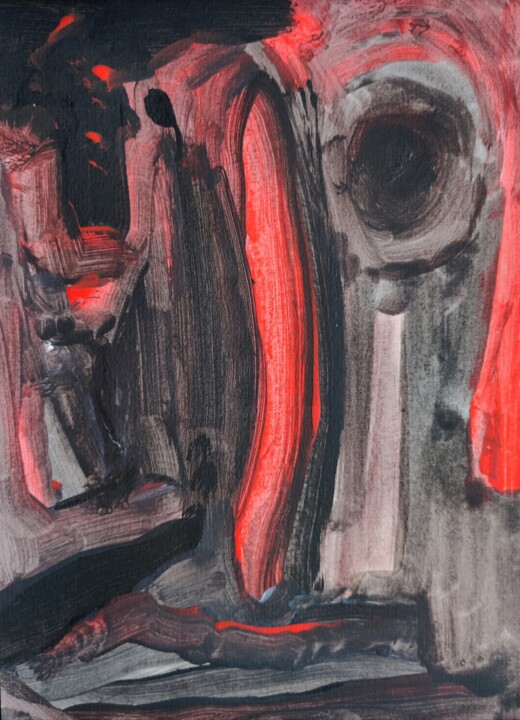
©2025 Milto Sideris
起源和历史
现代的原始艺术绘画,也被称为局外人艺术或非正统艺术,起源于20世纪初,是对传统学院艺术的回应。
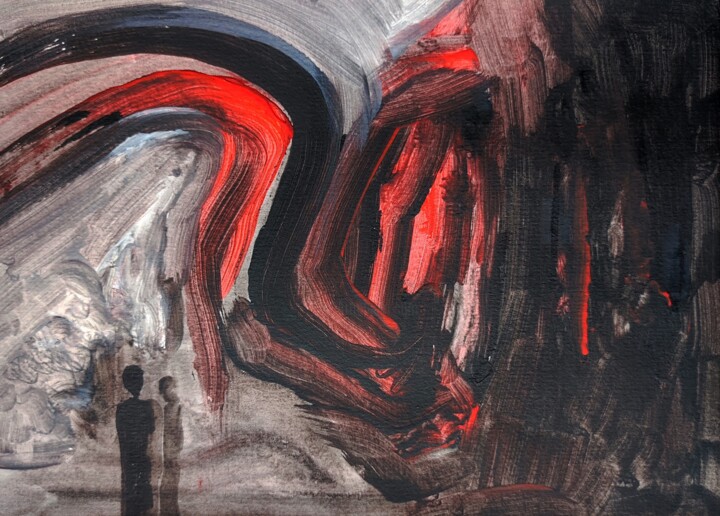
©2025 Milto Sideris
这些作品在当代艺术市场上的演变
当代纳伊夫艺术绘画在最近几年经历了一次演变,艺术家开始探索新的技巧和风格。这些作品常常具有鲜艳的色彩、粗犷的线条和孩子般的好奇心,能唤起一种怀旧和纯真的感觉。因此,这些绘画在当代艺术市场上越来越受欢迎,收藏家和爱好者追求独特和富有表现力的作品。一些艺术家也将社会或政治评论元素融入到他们的作品中,为他们的创作添加了更深层次的意义和相关性。总的来说,当代纳伊夫艺术绘画的不断演变反映了现代艺术的多样性和创造力,突出了在不断变化的艺术世界中拥抱新思想和技巧的重要性。
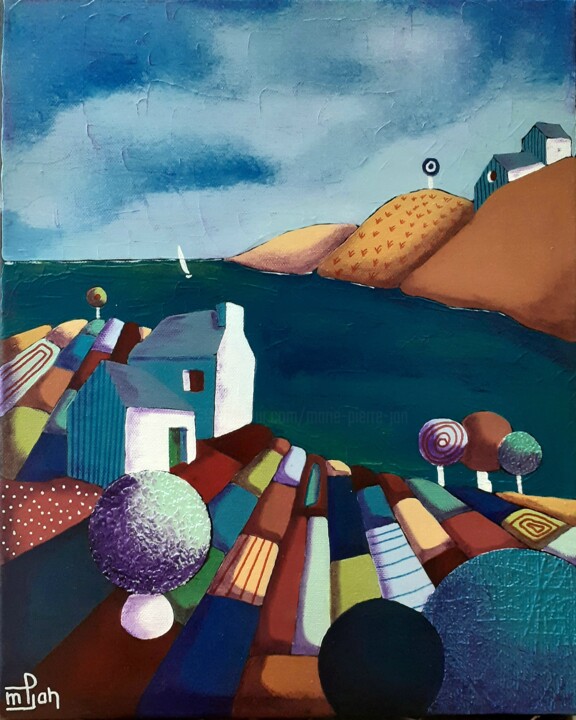
©2025 Marie-Pierre Jan
相关知名艺术家
以当代天真艺术绘画而闻名的艺术家包括原始主义艺术家、局外人艺术家、民间艺术画家和自学成才的艺术家。
其中一位艺术家是詹姆斯·卡斯尔,他是一位自学成才的艺术家,创造了一个由发现的物品制成的独特的绘画、绘画和建筑世界。卡斯尔的艺术以材料的表现力和捕捉日常生活美丽的能力而闻名。
另一位著名的艺术家是莫西夫人,她在76岁开始绘画,并因其描绘乡村生活的作品而获得国际认可。她的艺术以简单的形式、鲜明的色彩和迷人的叙述为特点。
Jean-Michel Basquiat是一位局外人艺术家,他使用原始、表现力强的风格探索种族、身份和权力主题。他的绘画经常呈现出大胆、图形化的形象和文本,反映了他作为一位黑人艺术家在美国的经历。
最后,亨利·达格尔是一位原始主义艺术家,他在他的画作、素描和写作中创造了一个史诗般的叙述。他的作品经常描绘由童话般的角色组成的幻想世界,这些角色与邪恶势力进行着史诗般的战斗。
这些艺术家代表了天真艺术绘画的不同风格和方法,但他们都有一个致力于通过艺术表达自己独特观点的承诺。

©2025 Оксана Чумакова
著名的当代纯朴艺术绘画作品
当代的原始艺术绘画因其简单而迷人的特性而在最近获得了巨大的流行。以下是一些知名艺术品及其简要描述:
"The Hug" by Jivya Soma Mashe (2007) 刻画了母亲和孩子之间的温馨时刻,采用了鲜艳的颜色和粗线条。
"The Village" by Séraphine Louis (1928) 描绘了一个充满细节和图案的多彩村庄场景,反映了艺术家对自然的热爱。
"The Dream" by Grandma Moses (1945) 是一幅奇幻的艺术作品,描绘了一个教堂和一条河流的梦幻般的村庄场景,采用了孩子般的风格。
"The Wedding" by Nikifor Krynicki (1968) 展示了传统波兰村庄里充满活力的婚礼仪式,细节复杂,色彩运用富有趣味。
"The Sunflowers" by Henri Rousseau (1909) 是一件美丽的杰作,描绘了丛林中的一群向日葵,采用了孩子般的天真和惊叹感。
总的来说,现代的原始艺术绘画通过其简单、迷人和鲜艳的色彩,为世界提供了独特的视角。

Liana Asatryan
油在帆布上 | 15.8x11.8 in
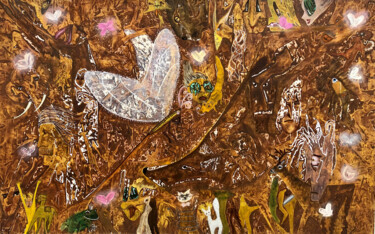
Sofia Markina
丙烯在亚麻帆布上 | 19.7x31.5 in
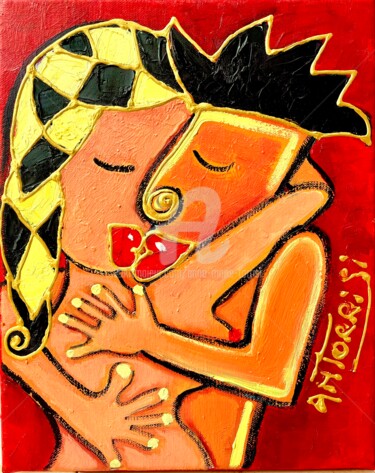
Anne Marie Torrisi
油在帆布上 | 11.8x9.5 in
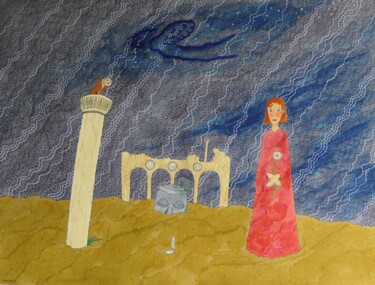
Laurent Mangepapier
水彩在纸上 | 19.7x25.4 in
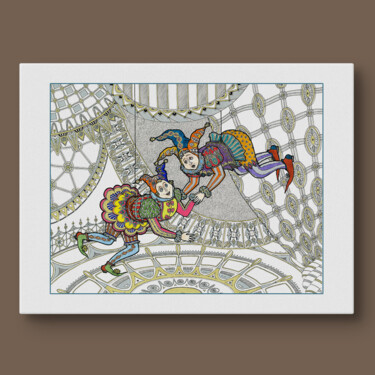
Inna Viriot
墨在纸板上 | 23.5x31.4 in
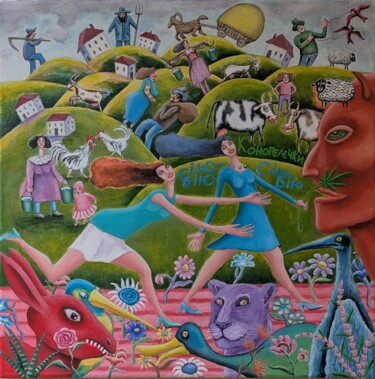
Ihor Miroshnycnenko (Miro)
丙烯在帆布上 | 19.7x19.7 in
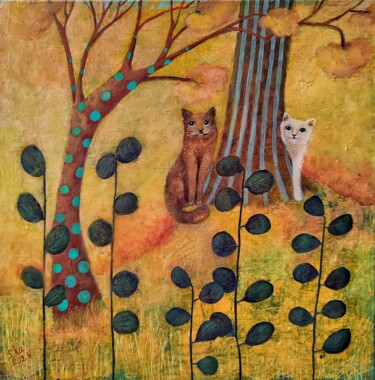
Svetlana Kuzhim
丙烯在亚麻帆布上 | 15.8x15.8 in
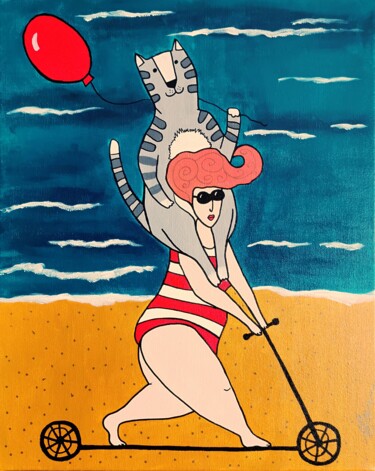
Daheaven Art
丙烯在帆布上 | 19.7x15.8 in
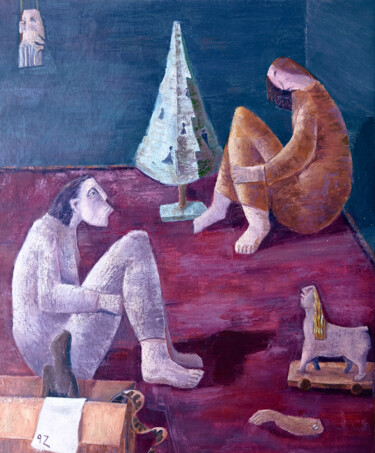
Gegham Hunanyan
油在帆布上 | 23.6x19.7 in
